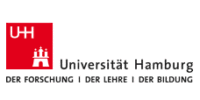Climate disasters such as floods, droughts, and cyclones are becoming more frequent in many parts of India, yet their impacts are not felt equally. Excluded communities – including Scheduled castes, Indigenous communities, and women-led households – often face the most severe consequences but are excluded from disaster planning and recovery efforts. A more inclusive approach to climate adaptation is essential to address these disparities. Social science tools like vulnerability mapping, gender analysis, and participatory planning can help better understand the specific risks these communities face. Disaster responses are more effective and equitable when they incorporate the knowledge and experiences of those most affected. Local communication, storytelling, and policy changes are critical for making climate adaptation more inclusive and just.
3 Comments
Leave a Reply
You must be logged in to post a comment.

The topic seems indeed timely and relevant. When focusing on excluded groups, it is likely that a considerable number of assumptions have to be made to be able to consider this for a specific region and/or phenomenon. I strongly suggest to make the assumptions explicit and based on literature.
To link questions of climate impacts and climate adaptation to questions of social equality is a relevant and timely poster idea for “Researching and Shaping Climate Futures”, and the case you mention is a case in point. This includes unpacking the terms climate impacts, disasters, and vulnerability. Please make sure to include evidence and references for all the statements you make, such as about the effectiveness of disaster responses.
It is important we advocate for climate justice that goes beyond emissions and economics, and you’ve effectively highlighted the need to reframe climate justice to center India’s excluded communities in adaptation efforts. The pathways you propose like vulnerability mapping and participatory tools can bridge gaps, turning climate impacts into nuanced, community-specific solutions. These methods act as boundary objects, merging science with social context for transformative policy. I look forward to seeing how these inclusive approaches confront deeply rooted social inequalities and advance equitable climate action.